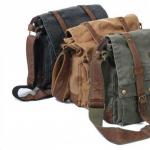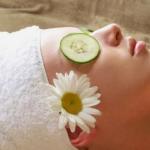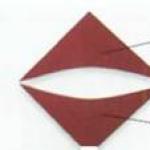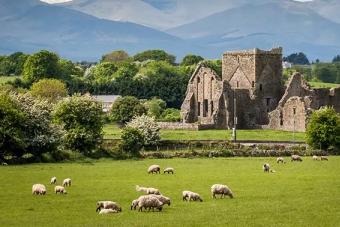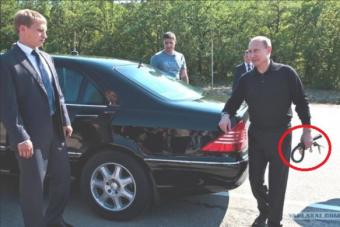Sections: Primary school
Class: 1
Lesson topic:“When did clothes appear?”
Goals: to introduce children to the history of clothing, diversity modern clothes.
Progress of the lesson.
Look among what beautiful dolls our Ant is. Why are they so beautiful? (Children talk about the clothes of the dolls, discuss the features of the clothes of different dolls).
But what happened to Ant? (The mood has changed). Why? (A question has arisen). Try to formulate it? (When did clothes appear?)
With Ant we will take a journey into the past to get acquainted with the history of clothing.
A student reads a poem.
So as not to freeze in the cold,
To escape the cold,
A man in any skin
I was ready to wrap up.
He cleaned the skin first,
Fixed it so it wouldn't fall,
And walked in the rain and in the snow
There is a man in this skin.
Let's guess how it all started.
Who do we see? (Primitive man.)
What did these people make clothes from? (From animal skins, since there were no fabrics).
When did these clothes appear? (Very long ago, in ancient times).
Our journey continues.
Where did our Ant end up? (To Ancient Greece).
What are the clothes made of? (Fabric).
This garment (tunic) was made from a large rectangular piece of fabric, which was skillfully wrapped around the body and secured with a brooch on one shoulder or two.
Let's try to dress like the ancient Greeks.
I am showing a piece of fabric. I offer one of the volunteers to dress another student.
And who can tell what Ant is wearing? (In the armor of a knight). This means that there was special clothing for protection in battle. What were these clothes made from? Why?
Times changed, and so did the clothes. The costumes were distinguished by great invention and ingenuity. Feathers, bows, lace collars, fluffy skirts. Elegant clothing emphasized a person’s dignity and beauty.
The ant invites us to continue the journey.
Where did Ant end up? (Nowadays). What kind of clothes are these? (Modern, business).
Each occasion also has its own clothes.
Define this style? (Sports).
What style is this? (Clothes for home. Home clothes).
But there are times when you can come in any clothes, and the more unusual they are, the better. What are these cases?
Masquerade, carnival. Ant at a masquerade.
Working with the textbook.
Determine where these people live?
Physical education minute.
Determine who is the owner of each suit? (Doctor, clown, military man, policeman).
Consolidation.
Workbook page 33.
Look what the children are wearing? Did they put everything on? What's missing?
Creative work.
( In pairs).
Who clothes all the people? (Fashion designer).
Imagine that you are fashion designers and you need to release new collection clothes.
1.  Sports.
Sports.
2. Homemade.
3. Business.
4. Evening.
5. School.
6. Masquerade.
7. Summer.
8. Working
Exhibition of works.
Bottom line.
Our journey has come to an end. We visited the distant past thanks to Ant and your creativity.
The Wise Turtle asks you a question.
Since when have clothes been around? What new did you learn? (Clothing appeared in ancient times, even among primitive people. They dressed in animal skins. Later, people learned to make fabrics and began to sew clothes).
Technological map of the lesson the world around us, grade 1
Theme: “When clothes appeared”
Lesson type:Learning new material
Objective of the lesson:
To acquaint students with the history of the appearance of clothing, the variety of modern clothing, its purpose (business, sports, work, home, holiday, national), develop creativity children, instill neatness, care for their clothes, show the dependence of the type of clothing on weather conditions.
Planned achievements:
The ability to trace the history of the appearance of clothing and the development of fashion;
Ability to select suitable clothing for a specific case.
To instill in children a responsible attitude towards their own appearance;
Formation of UUD:
Cognitive: Ability to navigate your knowledge system: distinguish new things from what is already known with the help of a teacher; gain new knowledge: find answers to questions using the textbook, your life experience and information received in the lesson.
Regulatory: The ability to determine and formulate a goal in a lesson with the help of a teacher; pronounce the sequence of actions in the lesson; work according to a collectively drawn up plan; evaluate the correctness of the action; plan your action in accordance with the task; make the necessary adjustments to the action after its completion based on its assessment and taking into account the nature of the errors made; express your guess.
Communicative: Skill express your thoughts orally; listen and understand the speech of others.
Personal: The ability to self-assess based on the criterion of success in educational activities.
Lesson equipment :
textbook “The world around us” by A.A. Pleshakov, part 2, workbook for the textbook “The World Around us” O.I. Dmitrieva, presentation on the topic: “When did clothes appear?”, pictures depicting people in various clothes, Table-plan: I know, I want to know, I found out; fabric for displaying antique clothing, pictures depicting the Question Ant and the Wise Turtle, bast shoes, emoticons, self-assessment scales; Students have colored pencils
Organization of work in the lesson :
frontal, group, in pairs, individual.
Lesson plan:
1. Organizational moment
2. Updating knowledge
3. Setting a learning task
4. Working on new material
5. Primary consolidation
6. Independent work with self-test in class
7. Result (reflection of educational activities)
Lesson stepsTeacher activities
Student activities
UUD
1. Organization
moment
(3 min)
Target:
Motivate students for learning activities by creating a favorable emotional environment;
Hello guys! Let's smile at each other. I am glad to see your faces, your smiles again, and I think that the lesson will bring us all the joy of communicating with each other. You will learn a lot and learn a lot. Let us wish each other success in our studies.
We are smart, we are friendly
We are attentive, we are diligent
We are in first grade
We will succeed!
Engage in educational dialogue
Personal: Self-determination
(motivation for learning)
2. Updating knowledge (5 min)
Target:
Update mental operations necessary and sufficient for the perception of new material: observations, comparisons, analogies;
Guys, in the last lesson you traveled! Tell me where you traveled
Did we travel to the past or to the future?
How did people learn about dinosaurs?
Guys, look at the picture, is this possible?
during the time of the dinosaurs
we traveled back in time because dinosaurs lived before humans appeared
people learned about the existence of dinosaurs from archaeological excavations
no, dinosaurs and people have never met
They remember the material from “Pages for the Curious”
Distinguish between past, present and future;
Establish a connection, explain why this cannot happen
Communication UUD: expressing your thoughts, arguing your opinion, taking into account the different opinions of students.
3. Setting a learning task
(5 min)
Target:
Setting by students the goal of the lesson, a way out of the difficulty;
Clarification and agreement on the topic of the lesson;
Formulating the steps that need to be taken to achieve the goal;
Today, we will travel again and answer the question “WHEN CLOTHES APPEARED”
LESSON PROBLEM
But what our journey will be about, determine if you guess the riddle.
Everyone knows
What to walk in and what to play in,
What to wear to bed
What to wear in winter, what to wear in summer -
This is no secret for you,
Just don't waste time -
Guess it quickly! What is this?
Guess what we will talk about in class?
So, man came to replace the dinosaurs!
This is what primitive man looked like. Describe him, what is he wearing?
You correctly described a man from ancient times. Why do you think he wears so little clothes? (clothes had not yet been invented, there were no fabrics..)
That's right, in those days they had not yet learned to sew clothes; there was not even thread for sewing. And primitive people made clothes from animal skins to protect themselves from cold, heat and rain.
The Wise Turtle again prepared a question in which she suggested the topic of the lesson to you. Read what problematic question we will answer in today's lesson.
Read what learning tasks the ant sets for us (Learning tasks in the textbook)
1. Let's find out when clothes appeared and how they changed over time.
2. Let's learn how to choose the right clothes for each occasion.
Understand the learning task and strive to complete it
Formulation of the lesson topic by children.
Using slides and textbook illustrations, trace the history of the appearance of clothing and the development of fashion; describe people's clothes based on their drawings.
Regulatory UUD:
Goal setting (setting a problem based on the correlation of what is known and what is not known).
Planning (determining the sequence of intermediate goals).
Forecasting.
We develop the ability to evaluate educational actions in accordance with the assigned task. We develop the ability to predict upcoming work (make a plan).
4. Physical exercise
Before we go with you to virtual trip in time we need to take care of our health
5. Working on new material
(10 min)
Target:
Implementation of the constructed project in accordance with the plan;
Fixation of a new method of action in speech;
Fixation of overcoming difficulties;
Clarification of the general nature of new knowledge;
Z introduction to the history of clothing
Today we will try to look into the past and find out the history of clothing.
Look at the pictures on page 20. What do all these clothes have in common?
That's right, these are clothes from the past.
What do you think was the first clothing to appear, and what was it made from?
Why did people make clothes from skins?
Time passed... People learned to make fabrics! There are so many different things made from fabrics in the world! And the fabrics themselves are so different: smooth and fluffy, light and heavy, warm and cool, dense and rare... But since they are called in one word - fabrics, it means that all of them, even the most dissimilar in appearance, are still something similar, right? Now we will learn the secret of fabrics!
Our turtle offers to answer the question: What is fabric made of?
Practical work
Children work in pairs.
Take fabric samples that are on your desks.
Let's look at the fabrics through a magnifying glass: threads are intertwined everywhere.
What is the secret of all fabrics? (all fabric threads hold tightly to each other)
And who intertwined these threads? The loom did it.
Yes, the fabric appeared at a later time. Look at the man wrapped in a piece of cloth. Who dressed like that?
Such clothes were worn in Ancient Greece. Describe the clothing (A large piece of cloth, the person turned around several times, and the ends were pinned together)
Is this type of clothing suitable for our country? Why?
Time passed and people learned to sew beautiful clothes. - Look at the rest of the human figures. What did clothes look like in past times? Times changed, and so did the clothes. The costumes were distinguished by great invention and ingenuity. But at all times, clothing emphasized a person’s dignity and beauty. (fluffy dresses with wide skirts, kokoshniks on their heads, Russian women wore sundresses, jewelry, hats, scarves appeared)
Previously, men's and women's shirts did not differ in cut. They put them on the body.
Both men and women wore loose enough clothing to move comfortably. But shirts and sundresses had to be belted. Casual clothing was most often white, since the fabric was not dyed. In the cold season, they wore zipuns and fur coats, and fur hats on their heads. Hands were protected from the cold with mittens.
The boyars and the tsar wore the same clothes, but they were made from expensive fabrics and had bright colors.
Times changed, and so did the clothes. The costumes were distinguished by great invention and ingenuity. But at all times, clothing emphasized a person’s dignity and beauty.
Determining the purpose of clothing
Look, what is Ant wearing?(in knight's armor) What is armor used for?
Which of the people in the picture in the textbook has clothing to protect them in battle? Russian hero. The heroes of other countries and even horses had such armor.
What were these clothes made from?(made of metal)
Why?(for protection)
What kind of clothes does a modern person wear?
Think about it: is it worth saving clothes?
How should you care for your clothes?
(iron, wash, wear carefully, etc.)
What clothes does the Wise Turtle wear?
(modern, rainproof)
Do we always dress the same?
What kind of clothes do we need for different occasions? How do people use clothing differently? Let's think about it! Let's complete the task in workbook No. 1 - Consult with your desk neighbor and complete the task. In what areas of the Earth do the people depicted in the first picture live?
Check with each other to see if you completed the task correctly.
Work in pairs.
What groups can clothes be divided into? modern man depending on its purpose? (business, work sports, for home) Work according to page 21 of the textbook.
What clothes are not in the textbook? (special)
By clothing you can find out where a person lives and who he works for. Each occasion requires special clothing.Work in the workbook on page 16 No. 2
What does " business clothes»?
Where can you go in business attire? Where do adults go dressed like this?
What does "sportswear" mean? Which sportswear do you have it?
On what occasions do you wear it?
What is “work clothes”? When would you wear work clothes?
What are you comfortable wearing at home? Is it possible to go on a visit in home clothes? Is it comfortable to play football or volleyball in a robe?
Looking at textbook illustrations
Children work in pairs and look at the fabrics offered.
Children work in pairs, look at the structure of tissue
Distinguish the national clothes of their people from the clothes of other peoples
Working with the textbook
The board reveals 19th century costumes
Conversation
Children look and discuss the topic - who had the first clothes and what they looked like
Conversation about Lean
attitude to clothes
Work in pairs: learn to distinguish between types of clothing depending on their purpose.
Regulatory UUD:
Goal setting.
Planning. Forecasting.
We develop the ability to carry out cognitive and personal reflection
Cognitive UUD.
summarize acquired knowledge;
consciously and voluntarily construct a speech utterance in oral form
6. Phys. just a minute.
(1min)
7.The stage of applying new knowledge.
(5 min)
Target:
Organize the consolidation of knowledge about types of clothing, be able to describe in detail a suit according to its purpose.
We have learned so much about clothes and now I challenge you to turn into fashion designers. Notebook No. 3.
Cut and glue correctly.
Group work
Children choose the desired headdress and glue
Self-test (on slide)
Regulatory UUD:
Correction (making adjustments to the plan and method of action in case of divergence from the standard)
Communicative UUD, cognitive UUD.
9. Summary
(reflection of educational activities)
(3 min)
Target:
Recording new content learned in the lesson; - students’ assessment of their own activities in the lesson;
What question did you answer?
What goals did you set for the lesson?
Have you achieved your goals? Why do you think so?
And now I suggest you evaluate your work with a smiley.
- You did a very good job, well done everyone!
Answer final questions and evaluate their achievements in class.
Regulatory UUD:
Control (comparison of the method of action and result with a given standard).
Assessment (awareness of what has already been learned, awareness of the quality and level of assimilation)


Objectives: To introduce students to the history of clothing; Introduce students to the history of clothing; Introduce a modern variety of clothing into the world; Introduce a modern variety of clothing into the world; Development of aesthetic taste and culture. Development of aesthetic taste and culture.



Travel to Ancient Greece. The history of Greek costume began with Asian diversity, prim splendor and petty artificiality, and ended with noble simplicity. The main element of the ancient clothing of the Greeks is a quadrangular woolen scarf, which was brought with them by the Dorians tribe who came from the north. It was the same for both men and women, but the female one was called “peplos”. It was wrapped around the body and secured at the shoulders with hairpins. This was the so-called “Dorian clothing”, created according to a completely original principle - without cutting and sewing. This principle became a discovery of ancient Greek culture.

Practical task. Become a resident of Ancient Greece for a while. Become a resident of Ancient Greece for a while. Try to turn a piece of fabric into a “peplos” Try to turn a piece of fabric into a “peplos” Do you feel comfortable in your new clothes? Do you feel comfortable in your new clothes?





Creative work. (In pairs).Who dresses all the people? (In pairs).Who dresses all the people? Imagine that you are fashion designers and you need to release a new collection of clothes.1. Sports. 2. Homemade.3. Business.4. Evening.5. School. 6. Masquerade.7. Summer.8. Working. Imagine that you are fashion designers and you need to release a new collection of clothes.1. Sports. 2. Homemade.3. Business.4. Evening.5. School. 6. Masquerade.7. Summer.8. Working.
 The appearance of clothing is associated with the emergence of man and his needs for it. The appearance of clothing is associated with the emergence of man and his needs for it. As civilization developed, changes in clothing style and design occurred. As civilization developed, changes in clothing style and design occurred.
The appearance of clothing is associated with the emergence of man and his needs for it. The appearance of clothing is associated with the emergence of man and his needs for it. As civilization developed, changes in clothing style and design occurred. As civilization developed, changes in clothing style and design occurred.

Literature: A.A. Pleshakov “The World Around Us”, M., “Enlightenment”, 2002. A.A. Pleshakov “The World Around Us”, M., “Enlightenment”, 2002

Sections: Primary school
Class: 1
Lesson topic:“When did clothes appear?”
Goals: to introduce children to the history of clothing and the variety of modern clothing.
Progress of the lesson.
Look among what beautiful dolls our Ant is. Why are they so beautiful? (Children talk about the clothes of the dolls, discuss the features of the clothes of different dolls).
But what happened to Ant? (The mood has changed). Why? (A question has arisen). Try to formulate it? (When did clothes appear?)
With Ant we will take a journey into the past to get acquainted with the history of clothing.
A student reads a poem.
So as not to freeze in the cold,
To escape the cold,
A man in any skin
I was ready to wrap up.
He cleaned the skin first,
Fixed it so it wouldn't fall,
And walked in the rain and in the snow
There is a man in this skin.
Let's guess how it all started.
Who do we see? (Primitive man.)
What did these people make clothes from? (From animal skins, since there were no fabrics).
When did these clothes appear? (Very long ago, in ancient times).
Our journey continues.
Where did our Ant end up? (To Ancient Greece).
What are the clothes made of? (Fabric).
This garment (tunic) was made from a large rectangular piece of fabric, which was skillfully wrapped around the body and secured with a brooch on one shoulder or two.
Let's try to dress like the ancient Greeks.
I am showing a piece of fabric. I offer one of the volunteers to dress another student.
And who can tell what Ant is wearing? (In the armor of a knight). This means that there was special clothing for protection in battle. What were these clothes made from? Why?
Times changed, and so did the clothes. The costumes were distinguished by great invention and ingenuity. Feathers, bows, lace collars, fluffy skirts. Elegant clothing emphasized a person’s dignity and beauty.
The ant invites us to continue the journey.
Where did Ant end up? (Nowadays). What kind of clothes are these? (Modern, business).
Each occasion also has its own clothes.
Define this style? (Sports).
What style is this? (Clothes for home. Home clothes).
But there are times when you can come in any clothes, and the more unusual they are, the better. What are these cases?
Masquerade, carnival. Ant at a masquerade.
Working with the textbook.
Determine where these people live?
Physical education minute.
Determine who is the owner of each suit? (Doctor, clown, military man, policeman).
Consolidation.
Workbook page 33.
Look what the children are wearing? Did they put everything on? What's missing?
Creative work.
( In pairs).
Who clothes all the people? (Fashion designer).
Imagine that you are a fashion designer and you need to release a new collection of clothes.
1.  Sports.
Sports.
2. Homemade.
3. Business.
4. Evening.
5. School.
6. Masquerade.
7. Summer.
8. Working
Exhibition of works.
Bottom line.
Our journey has come to an end. We visited the distant past thanks to Ant and your creativity.
The Wise Turtle asks you a question.
Since when have clothes been around? What new did you learn? (Clothing appeared in ancient times, even among primitive people. They dressed in animal skins. Later, people learned to make fabrics and began to sew clothes).


Objectives: To introduce students to the history of clothing; Introduce students to the history of clothing; Introduce a modern variety of clothing into the world; Introduce a modern variety of clothing into the world; Development of aesthetic taste and culture. Development of aesthetic taste and culture.



Travel to Ancient Greece. The history of Greek costume began with Asian diversity, prim splendor and petty artificiality, and ended with noble simplicity. The main element of the ancient clothing of the Greeks is a quadrangular woolen scarf, which was brought with them by the Dorians tribe who came from the north. It was the same for both men and women, but the female one was called “peplos”. It was wrapped around the body and secured at the shoulders with hairpins. This was the so-called “Dorian clothing”, created according to a completely original principle - without cutting and sewing. This principle became a discovery of ancient Greek culture.

Practical task. Become a resident of Ancient Greece for a while. Become a resident of Ancient Greece for a while. Try to turn a piece of fabric into a “peplos” Try to turn a piece of fabric into a “peplos” Do you feel comfortable in your new clothes? Do you feel comfortable in your new clothes?





Creative work. (In pairs).Who dresses all the people? (In pairs).Who dresses all the people? Imagine that you are fashion designers and you need to release a new collection of clothes.1. Sports. 2. Homemade.3. Business.4. Evening.5. School. 6. Masquerade.7. Summer.8. Working. Imagine that you are fashion designers and you need to release a new collection of clothes.1. Sports. 2. Homemade.3. Business.4. Evening.5. School. 6. Masquerade.7. Summer.8. Working.
 The appearance of clothing is associated with the emergence of man and his needs for it. The appearance of clothing is associated with the emergence of man and his needs for it. As civilization developed, changes in clothing style and design occurred. As civilization developed, changes in clothing style and design occurred.
The appearance of clothing is associated with the emergence of man and his needs for it. The appearance of clothing is associated with the emergence of man and his needs for it. As civilization developed, changes in clothing style and design occurred. As civilization developed, changes in clothing style and design occurred.

Literature: A.A. Pleshakov “The World Around Us”, M., “Enlightenment”, 2002. A.A. Pleshakov “The World Around Us”, M., “Enlightenment”, 2002

